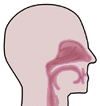  |
||
 |
August 2018Agnostic pathology defines the evaluation of hyposmiaWhile there are multiple pathologies which cause hyposmia (smell loss) many of these pathologies appear to have similar pathological mechanisms by which hyposmia is initiated. There are multiple pathological events which cause hyposmia. Among these are post-viral-like infections (about 30%), allergic rhinitis with both infectious and immunological components (about 25%), head injury associated with the post concussion syndrome (about 15%), idiopathic or unrecognized causes (about 12%) and a variety of other causes (post general anesthesia, post cerebral vascular accident, post chemotherapy for malignancy treatment, post therapeutic radiation, drug related and many other causes). While these diverse etiologies appear to be quite different, we have found that the biochemical/metabolic mechanisms underlying these diverse pathologies are similar. These similarities relate to a potential defect at the olfactory receptor itself. These receptors are quite unique in that they do not possess blood vessels or lymphatics, they do not exhibit mitosis or cellular turnover yet they appear to metabolize at a rapid rate, with most receptors turning over on a daily basis. This may be understandable since these receptors are open to the external environment and are under constant potential trauma from external environmental events and local traumatic changes. These phenomena underlie the mechanism of rapid turnover of the receptors of this special epithelium upon which our well-being is dependent. We avoid noxious odors and are attracted to beneficial substances but then traumatic events can and do occur. Thus, how does the system work in relationship to this rapid turnover? How do we repair these injuries? What are the similarities in the pathology underlying olfactory receptor function and how does this repair mechanism operate? In order to maintain this critical system there are stem cells which are immortal and which are under the influence of growth/transcription factors secreted into nasal mucus by protein secreting glands in the nose. These growth factors stimulate these stem cells to generate the entire panoply of olfactory receptor cells by which normal olfaction occurs. If any pathology interferes with these secretions smell loss occurs. To our surprise when we analyzed nasal mucus from patients who had these various pathologies, we discovered that they all had similar deficiencies in secretion of these growth/transcription factors necessary to maintain the generation and perpetuation of these receptors. Indeed, following treatment which generated these growth/transcription factors, olfactory function improved so that the action of these multiple pathologies which caused hyposmia was corrected and smell function was restored. Reference
|
|